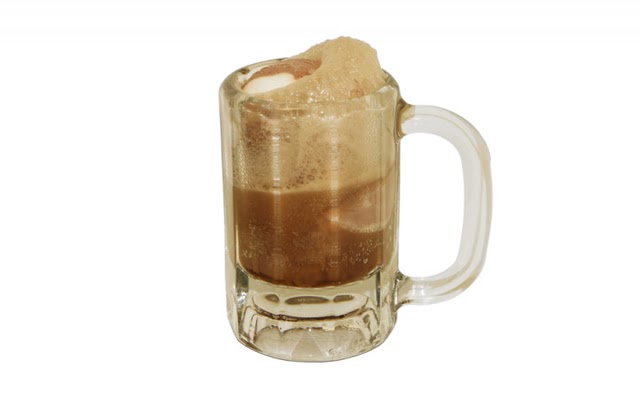Quck answer
When you combine root beer and ice cream in a float, the carbonation in the root beer causes the formation of foam. This is because the carbon dioxide gas that is dissolved in the root beer is released when it comes in contact with the ice cream, creating bubbles and foam. The fat content in the ice cream also contributes to the foam formation by stabilizing the bubbles. Additionally, the proteins in the ice cream act as surfactants, which further enhance the foam formation. So, the combination of carbonation, fat, and proteins in a root beer float leads to the presence of foam.

On a hot summer day, there’s nothing better than a root beer float. It combines sweet and fizzy soda with smooth ice cream. What are we talking about? A root beer float, of course!
If you’re like most kids, you’ve probably enjoyed a cold root beer float on many warm days. If you haven’t tried one yet, you’re missing out! You’ll love it!
The easiest way to make a root beer float is to put a large glass in the freezer until it’s super cold. Then, scoop a couple of scoops of vanilla ice cream into the glass. Pour chilled root beer over the ice cream until it foams up. Add a straw and a spoon, and you’re good to go!
You’ve probably noticed that root beer floats get really foamy. While any carbonated soda will create bubbles when poured into a glass, adding ice cream to a root beer float creates even more foam. What’s happening inside that glass?
Science explains the foamy goodness on top of a root beer float. When carbonated root beer comes in contact with the ice cream, carbon dioxide bubbles are released. The soda also helps release air bubbles trapped in the ice cream. The fat in the ice cream coats these bubbles, protecting them and allowing them to expand, creating the large heads of foam on root beer floats.
No one knows for sure who first combined root beer with ice cream to make a frosty treat, but historians believe it was either Robert Green or Fred Sanders. They think this cool concoction was likely invented in the United States in the late 1800s.
In many places, the root beer float has a special nickname. You might hear someone order a “brown cow” when they want a root beer float. Other soda floats have similar nicknames.
A “black cow” is made with Coke® and vanilla ice cream, a “purple cow” is made with grape soda and vanilla ice cream, and a “chocolate cow” mixes chocolate ice cream with root beer. The specific nicknames can vary by region, so make sure you know what you’re getting when you order a particular color cow!
By the way, root beer gets its name because it was originally made from the root of the sassafras plant. Today, root beer is mainly popular in the United States, with hundreds of different brands made in every state.
There is no standard root beer recipe. Most root beer today is made with artificial sassafras flavoring. Other ingredients are added to create unique flavors. Some common additives include vanilla, wintergreen, licorice root, sarsaparilla root, nutmeg, molasses, cinnamon, and honey. Most root beers are also caffeine-free!
Give It a Try
Are you thirsty yet? Maybe you’re even hungry! Have fun with your friends and family by trying out the activities below:
Do you have a liking for root beer? Were you aware that it is possible to create homemade root beer in the comfort of your own kitchen? This is indeed true! Go online and take a look at the recipe for Homemade Root Beer. It is possible that you will need to go to the store to purchase a few of the necessary ingredients. Discuss the recipe with a family member and then make plans to brew a batch of root beer at a time when you can share it with your friends!
Are you up for a challenge? This activity is just what you have been waiting for! Accompany an adult on a field trip to the grocery store. Prepare a list beforehand and then shop for all the ingredients needed to make your very own root beer floats at home. Naturally, you will need root beer and ice cream. Can you think of any other modifications to the recipe? Be daring and feel free to experiment with different types of soda and various flavors of ice cream. For instance, you could try using orange soda and vanilla ice cream to make a homemade Dreamsicle®!
Do you adore ice cream? Who doesn’t, right? Have a blast with friends and family by revisiting some of the interesting past Wonders of the Day related to ice cream: “Why Do You Get Ice Cream Headaches?”, “What’s Your Favorite Ice Cream Flavor?”, and “What Is Gelato?”.





Leave a Reply